
S 500 ‘PROMETHEUS’: ENHANCING AIR DEFENCE CAPABILITY INTO THE AEROSPACE DOMAIN

The S-500 Prometey (Prometheus) 55R6M Triumfator-M (aptly named after one of the Titans and the God of fire in Greek mythology!) is an advanced Russian Air Defence/Anti-Ballistic Missile (ABM) System, designed to augment the S-400 Triumf (read more about the S-400 @ https://chanakyaforum.com/s-400-triumf-transforming-indias-air-defence/) and the under-development A-235 PL-19 Nudol hypersonic ABM and Anti-Satellite Weapon System.
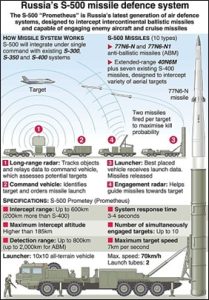
Russian interest in selling the S-500 to India was first indicated in September 2021, when then Russian Deputy Prime Minister Yuri Borisov indicated that India could well be the first Nation to whom the S-500 would be offered. The S-500 could be a worthy augmentation to India’s Ballistic Missile Defence (BMD) Shield, of which the S-400 is an important component. India and Russia signed a Government-to-Government agreement during the BRICS Summit in October 2016 for supply of five S-400 Regiments. Post delays due to the threat of US sanctions under the Countering America’s Adversaries Through Sanctions Act (CAATSA) and due to the selection of the S-400 over similar US-manufactured systems, the S-400 deal was finally inked on 05 October 2018 (read more @ https://chanakyaforum.com/s-400-triumf-transforming-indias-air-defence/). India currently has deployed two S-400 Regiments, with the balance three likely to be inducted over the next 12 to 24 months.
Development Profile
The S-500 has been developed by the State-owned Almaz-Antey Corporation (a result of a merger of Antey Corporation and the R&D firm NPO Almaz- the latter also being the developer of the S-400). In 2002, NPO Almaz prepared an engineering note on the creation of a 5th generation anti-aircraft missile system, identifying the main performance characteristics of the system. Work on the design of the system began in 2003. Subsequently, in 2004, preliminary design of the S-500 system commenced. Initially planned to be in production by 2014, a total of 10 S-500 Regiments were envisaged for the Russian Aerospace Defence Force, under the State Armament Programme-2020. A Naval version for the stealth, nuclear-powered guided-missile Lider Class Destroyers is also envisaged. The development of the S-500 finally commenced in mid-2019, while serial production only began in 2021. Production was further hit by sanctions due to the ongoing Russia-Ukraine war. Reports of successful testing were made public in May 2018, June 2019 and July 2021. The final phase of testing was conducted on 22 February this year, wherein the S-500 successfully engaged and destroyed an R-29RMU2 Sineva ICBM, which was launched by a nuclear-powered missile cruiser from the Laptev Sea, thus demonstrating the capability of the S-500 to intercept hypersonic targets effectively.
The first unit reportedly entered service in 2021 with the 15th Aerospace Army, notably responsible to operate ballistic missile early warning systems and to conduct space domain-based operations, including satellite command and control.
The S-500 is envisaged to be enmeshed with the S-400 systems to make up the upper tier of Russia’s layered, integrated missile-defence and Air Defence shield, intended to gradually phase out the earlier S-300 systems. The present cost of one S-500 system is purported to be in the range of US $ 2.5 Billion.
System Architecture
The S-500 is designed for intercepting and destroying intercontinental ballistic missiles (ICBM) upto a range of 600 Km, and hypersonic cruise missiles/aircraft upto 500 Km, including those with stealth/low-observable (LO) technology. These ranges are far in excess of those of the US Terminal High Altitude Area Defence System (THAAD)- an ABM system with ‘hit-to-kill’ interception, the US Patriot Surface-to-Air Missile (SAM) System and the unrelated US Army Tactical Missile System (ATACMS), all of which have engagement ranges not exceeding 300 Km. The S-500 is envisaged to be able to detect and simultaneously engage up to 10 ballistic/hypersonic missile targets flying at up to a maximum speed of 7 km/s (Mach 20), at an altitude of 180 to 200 Km. It is also purported to be effective against Unmanned Aerial Vehicles ( UAVs), Low-Earth Orbit (LEO) satellites and hypersonic air-launched vectors/orbital platforms. It is envisaged to have a response time of 4 seconds or less ( less than half that of the S-400!). These capabilities, however, have not been holistically demonstrated in an operational environment. Russia has reportedly operationally deployed the S-500 in the Crimean Peninsula to protect the Kerch Bridge, a key route of Russia’s main supply lines into Southern Ukraine. This comes in the aftermath of several S-400 systems having been damaged by Ukraine’s US-made Army Tactical Missile System (ATACMS) tactical ballistic missiles. The greater ABM engagement ranges of the S-500 are likely to accord enhanced protection against such vectors.
The S-500 battery includes four radars, as elucidated below. These allow the S-500 to detect ballistic/aerial targets at ranges up to 2000/800 Km, respectively. The S-500 is likely to be ready to fire in as little as 10 minutes from travelling position and three minutes from a deployed configuration. The principal interconnected system components are elucidated in succeeding paragraphs.
(a) Command Post Vehicle (CPV) (55K6MA/ 85Zh6-2)
The 55K6MA CPV is an evolution of the 55K6E battery command post used with the S-400, while the 85Zh6-2 may refer to a command post for an extended battery. The CPVs feature a telescoping datalink antenna, which might suggest employment to control widely dispersed deployments. The CPV will control all functions of surveillance, target acquisition, designation, tracking and engagement.
 55K6MA CPV:Source- armyrecognition.com
55K6MA CPV:Source- armyrecognition.com
(b) Acquisition & Battle Management Radar 91N6A(M)
This ‘Big Bird’ S-Band radar allows for the detection and management of multiple targets, thus enhancing the system’s situational awareness and consequent operational readiness. This, along with the other acquisition/ engagement radars, allow the S-500 to simultaneously engage up to 10 targets. This capability has proved invaluable to overcome simultaneous threats, a technique employed in Ukraine in an attempt to saturate and defeat such systems. This radar is an advanced version of the 64N6E radar series, which is typically used to support multiple S-300/S-400 missile batteries. The radar offers different operating modes for maximum adaptation to combat conditions, viz. continuous antenna rotation, sector view, and additional antenna tilt.
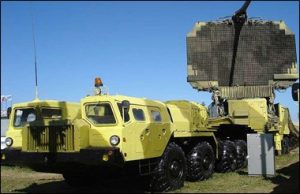
 91N6 ‘Big Bird’ Radar: Source-ausairpower.net/vojnaknjizara.com
91N6 ‘Big Bird’ Radar: Source-ausairpower.net/vojnaknjizara.com
(c) Acquisition Radar 96L6-TsP
This C-Band acquisition radar is a derivative of the 96l6E ‘Cheeseboard’ All-Altitude Acquisition Radar used in the S-400. Its inclusion indicates that aerial manned/unmanned targets will be part of the S-500 tasking, as this radar is not adaptable for ABM operations. This radar will feature the 40V6MT Universal Mobile Mast System, adapted for the S-500.
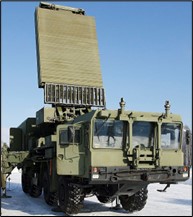
 Acquisition Radar 96L6-TsP: Source- ausairpower.net/armyrecognition.com
Acquisition Radar 96L6-TsP: Source- ausairpower.net/armyrecognition.com
(d) Multimode Engagement Radar 76T6 and ABM Engagement Radar 77T6
Both engagement radars are likely to have space-fed passive phased array designs- a technology that is mature in Russian radar design. In comparison with mechanical scanning antennae, the space-fed phased array antenna is capable of scanning longer distances, thus facilitating enhanced engagement ranges of the S-500. It is likely that the 76T6 is a derivative of the 92N6E Grave Stone used in the S-400, intended to provide guidance for engagement of aerial/Intermediate Range Ballistic Missile targets.
 Multimode Engagement Radar 76T6:Source- armyrecognition.com
Multimode Engagement Radar 76T6:Source- armyrecognition.com
 ABM Engagement Radar 77T6:Source- armyrecognition.com
ABM Engagement Radar 77T6:Source- armyrecognition.com
(f) Launch Vehicle 77P6
The self-propelled Transporter-Erector-Launcher (TEL) of the S-500 will notably carry two launch tubes, unlike the S-300 and S-400 TELs, which carry four. This is probably due to the fact that the missiles of the S-500 would be significantly larger, owing to their enhanced interception range of 600 Km.
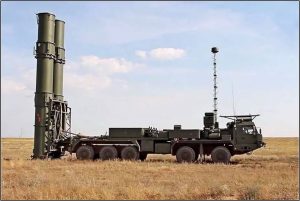
 77P6 TEL: Source-militarywatchmagazine.com/ armyrecognition.com
77P6 TEL: Source-militarywatchmagazine.com/ armyrecognition.com
(f) BAZ-69096/ MZKT-792911/7930 Prime Movers
These 8×8/10×10 prime movers are all-terrain, high-mobility vehicles, which lend to the system’s inherent deployment flexibility and responsiveness.
 BAZ-69096 10×10 Prime Mover: Source- ausairpower.net
BAZ-69096 10×10 Prime Mover: Source- ausairpower.net
Missiles
The S-500 can launch several types of missiles. These include the 40N6M (400 Km range) for use against aircraft/cruise missiles, and the new 77N6/77N6-N1 ABM/satellite interceptors (500- 600 Km range). The 40N6M is a two-stage solid fuel missile that is capable of reaching speeds of Mach 9. The missile would have a blast-fragmentation warhead with an accuracy of 95%. Both the 77N6 and 77N6-N1 can be fitted with an inert warhead to kinetically destroy incoming nuclear warheads by a direct hit, as opposed to fragmentation warheads. These missiles would have a speed of 5 to 7 Km/s, allowing them to successfully intercept hypersonic missiles. The S-500 would also reportedly be able to launch the existing missiles used by the S-400 including the 40N6, 48N6 and 9M96 (see https://chanakyaforum.com/s-400-triumf-transforming-indias-air-defence/ ). The S-500 is also likely to be capable of firing the 53T6M ( PRS-1M) Hypersonic Interceptor Missile, developed as part of the A-235 PL-19 Nudol hypersonic ABM and Anti-Satellite Weapon System, with a top speed of Mach 14.
Anti-Stealth Capability
The S-500 is likely to have enhanced capability to detect and engage stealth aircraft, including the US F-22 Raptor and F-35 Lightning II. The S-500 employs advanced radar technology that can detect LO aircraft, which are designed to evade traditional radar systems. By using multiple radar frequencies and sophisticated signal processing, the S-500 can identify and track such stealth aircraft, reducing their effectiveness in penetrating defended airspace. Since the 91N6A(M) is a S-Band radar, it enjoys enhanced capability against stealth/ LO aircraft, since, towards the higher wavelengths of the S/L Bands and beyond, the LO shape tends to lose relevance as the wavelength tends to equal the Radar Cross-Section of the stealth/LO aircraft and this causes reflection from the general shape of the aircraft to increase, thus compromising stealth.
How Does The S-500 Fit Into the Indian Paradigm?
India is well on its way to deploying a fully functional BMD Shield, albeit in limited/sensitive areas across the Indian mainland. In Phase 1, the outer layer for high-altitude interception currently consists of Prithvi Air Defence Hypersonic Missile Interceptor, with an operational range of 300 to 2000 Km, which can intercept and destroy missiles at altitudes of 50 to 180 Km. The inner layer for the low-altitude interception, is the Advanced Air Defence Supersonic Missile Interceptor, which has an operational range of 200 Km, for interception in the endo-atmosphere at altitudes of 15-40 Km and at speeds below Mach 5. Development of Phase 1 of the BMD is presently deemed to be complete ( read more @ https://chanakyaforum.com/indias-ballistic-missile-interceptors/ ).
Short-Range Interception in the BMD will be achieved by vectors like the Akash/ Akash (New Generation) SAM, which currently forms part of the inventory of the Indian Army and the Indian Air Force, with a maximum range of 70 Km.
In BMD Phase 2, the AD-1 is a long-range interceptor missile designed for both low exo-atmospheric and endo-atmospheric interception of long-range ballistic missiles/aircraft. The under-development AD-2 will be used to engage ICBMs with ranges up to/over 5000 Km and apogees well clear of earth’s atmosphere- these would need an exo-atmospheric interceptor with thrust vector control/onboard rocket thrusters to manoeuvre in a near-vacuum environment.
In both phases, there is the requirement of an ABM interceptor with hypersonic capability (speeds greater than Mach 5 ) and high manoeuverability, for interception of ballistic/hypersonic missiles respectively. There is also a need for stealth/LO aircraft detection/engagement capability. The S-500, with claimed engagement altitudes of approximately 200 Km against ballistic targets travelling at speeds up to Mach 20, and hyper-maneuverability against hypersonic weapons, is ideally suited to fit into the required endo-atmospheric/anti-hypersonic vector capabilities of India’s BMD, in addition to engagement capabilities against stealth/LO airborne targets.
Conclusion
The S-500 is slated to be a game-changer in the arena of ABM/anti-hypersonic cruise missile/anti-airborne stealth defence. It is therefore important that India recognises the need for such a system and works towards its speedy acquisition if deemed suitable, keeping in mind the emerging potential buyers for the S-500. China is a likely candidate, while Turkey has also shown interest, despite its previous controversial S-400 acquisition. Acquisition of the system by the Dragon will, without a doubt, be used to augment its A2AD umbrella. However, the danger of reverse engineering of a world-leading acquisition/interception system may cause Russia to think twice before offering it to the latter.
Disclaimer
The opinions expressed in this article are the author’s own and do not reflect the views of Chanakya Forum. All information provided in this article including timeliness, completeness, accuracy, suitability or validity of information referenced therein, is the sole responsibility of the author. www.chanakyaforum.com does not assume any responsibility for the same.
Chanakya Forum is now on . Click here to join our channel (@ChanakyaForum) and stay updated with the latest headlines and articles.
Important
We work round the clock to bring you the finest articles and updates from around the world. There is a team that works tirelessly to ensure that you have a seamless reading experience. But all this costs money. Please support us so that we keep doing what we do best. Happy Reading
Support Us





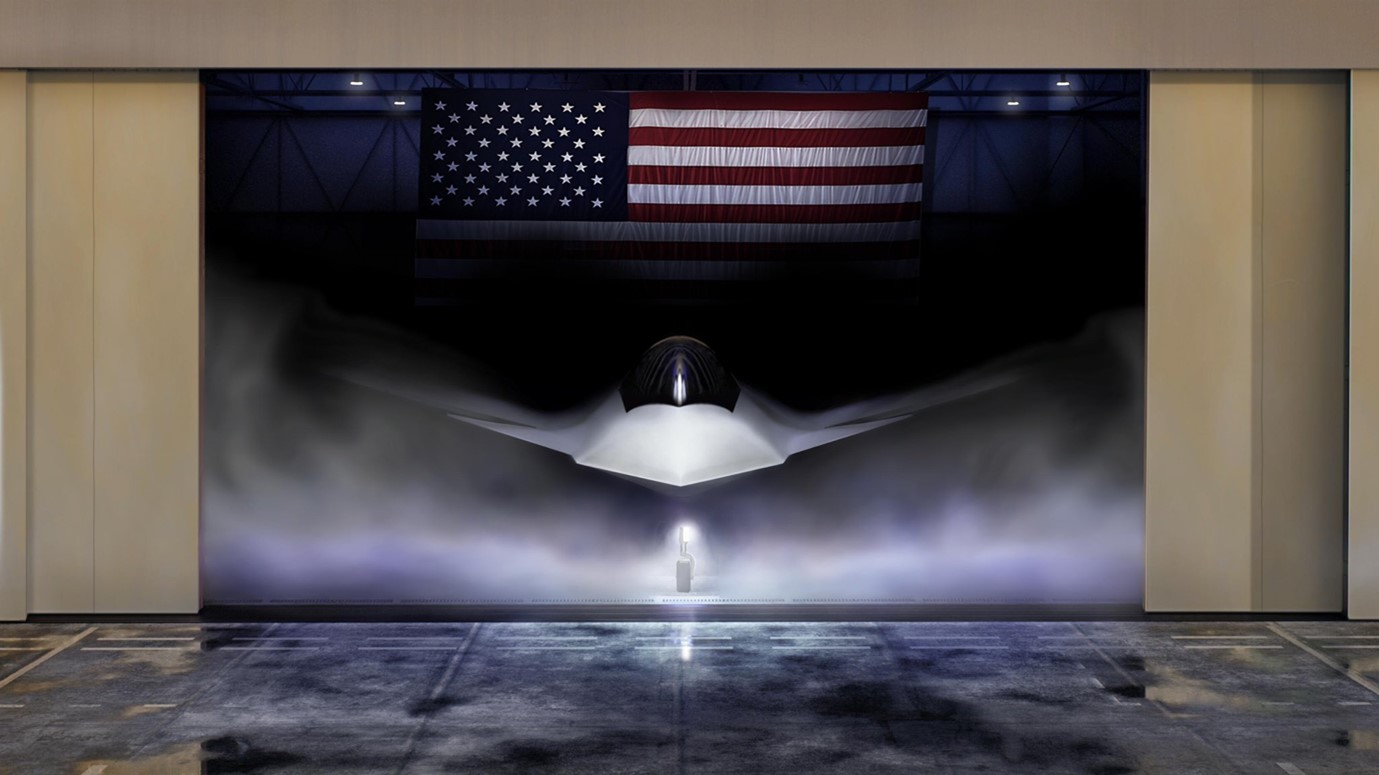









POST COMMENTS (2)
temp mail
usasportsurge